Welcome to the world of glass wine bottles – where design meets functionality in winemaking! As integral parts of both preserving and presenting wine, glass bottles require careful thought when selecting. In this blog, we discuss frequently asked questions regarding bulk glass wine bottles from basic size/color considerations to subtleties such as shape/quality. Whether you are an established winemaker, a newcomer to making wine, a wine enthusiast, or simply curious about how these vessels influence a bottle’s journey from vineyard to glass! Come explore how glass impacts wine’s journey! Join us as we discover all its secrets while deciphering how glass wine bottles impact its journey from vineyard to glass!
Table of Contents
ToggleCONTENTS LIST
Q1: What are the standard sizes of glass wine bottles?
Q2: How does bottle shape affect wine aging?
Q3: What is the best color for a wine bottle to protect the wine?
Q4: Can the glass quality of a wine bottle affect the taste of the wine?
Q5: What are the environmental impacts of different glass bottle colors?
Q6: How do I choose the right closure for my wine bottle?
Q7: What are the benefits of custom-designed wine bottles?
Q8: Are there specific glass bottle designs for different types of wine?
Q9: How does bottle weight impact wine quality and shipping costs?
Q1: What are the standard sizes of glass wine bottles?
When it comes to wholesale glass wine bottles, size matters for various reasons – from serving sizes to aging potential. Here are the standard sizes you’ll commonly find in the market:
Half Bottle (375ml): Half the size of a standard bottle, this is great for those who want to enjoy wine without opening a full bottle. It’s also a popular choice for dessert wines.

Standard (750ml): This is the most prevalent size, ideal for a wide range of wines. It’s perfect for a dinner for two or a small gathering, offering about 4 to 5 glasses of wine.

Magnum (1.5L): Holding two standard bottles’ worth of wine, magnums are favored for aging wines. The larger volume means a slower oxidation process, potentially enhancing the aging of the wine.
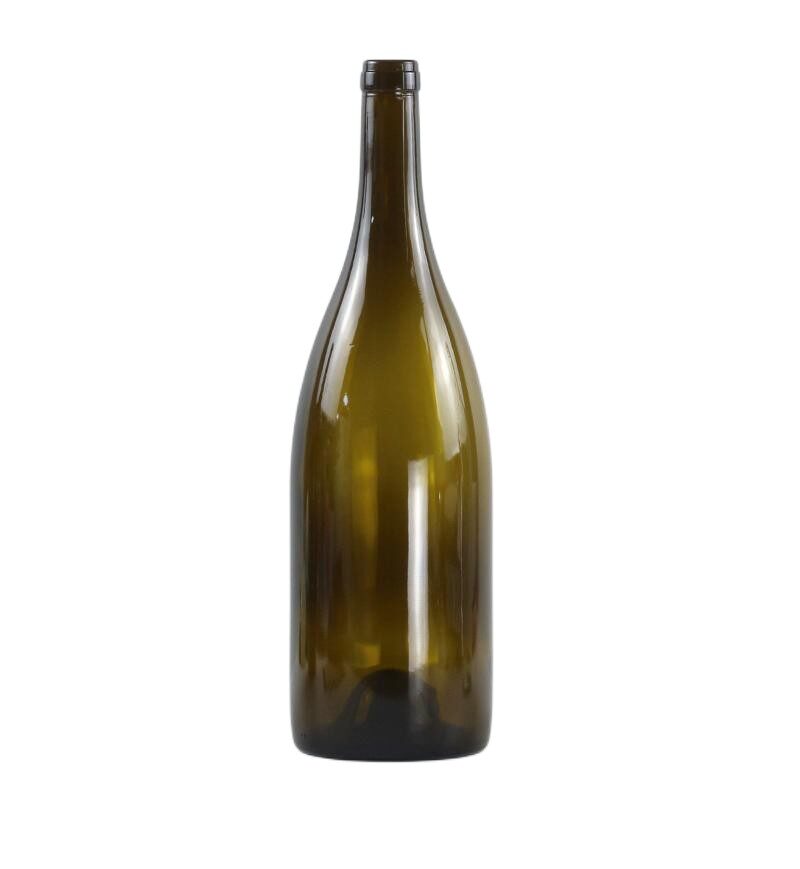
Double Magnum (3L): This size is equivalent to four standard bottles and is often used for celebrations or as a collector’s item.
Jeroboam (4.5L for sparkling, 3L for still wine): The size varies depending on whether the bottle is for sparkling or still wine. It’s a statement bottle, often seen in festive or ceremonial occasions.
Imperial (6L): Containing the equivalent of eight standard bottles, the Imperial is a grand choice for significant events and is often used in Bordeaux for premium wines.
Q2: How does bottle shape affect wine aging?
The shape of an empty wine bottle can subtly influence the aging process of wine, a detail often overlooked yet integral to the winemaking and storing process. Here’s how different bottle shapes can impact wine aging:
▶ Shoulder Design:
○ High Shoulders (Bordeaux-style bottles): These bottles have distinct, high shoulders, which are effective in trapping sediment as the wine ages. This is particularly beneficial for wines that develop significant sediment over time, like many red wines.
○ Gentle Slopes (Burgundy-style bottles): The sloping shoulders in Burgundy-style bottles are less effective at trapping sediment. However, they are traditionally used for wines that typically produce less sediment, such as Pinot Noir and Chardonnay.
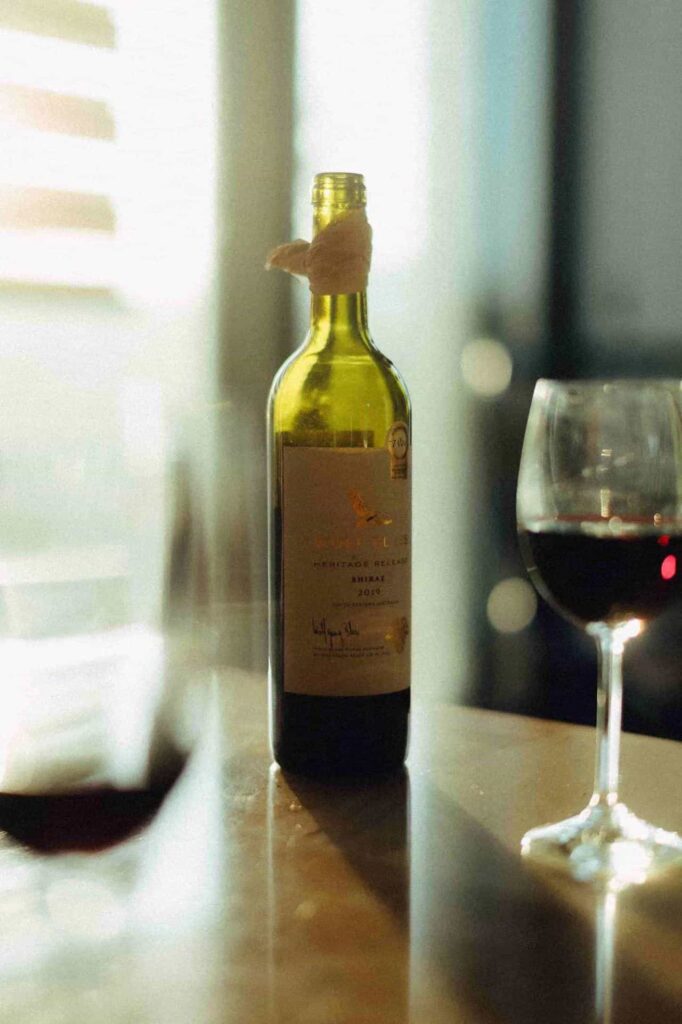
▶ Bottle Size and Volume:
Larger bottles, like Magnums, have a smaller oxygen-to-wine ratio due to the proportion of wine to the size of the cork. This reduced exposure to oxygen can slow down the aging process, potentially leading to a more gradual and nuanced maturation of the wine.
▶ Light Exposure:
While not directly related to shape, the color and thickness of the bottle, often correlated with certain shapes, can impact how much light reaches the wine. Darker, thicker bottles provide more protection against light, which is crucial for long-term aging as UV rays can degrade wine quality over time.
▶ Storage and Stability:
The stability and ease of storage, influenced by a bottle’s shape, can also affect aging. Bottles that are easier to store in stable conditions are less likely to experience disturbances that could impact the aging process.
While the shape of the bottle may seem purely aesthetic at first, it is important for the maturation of wine. The bottle shape can affect sediment deposition, the amount of light that reaches it, and how long it is stored. All these factors influence the maturation of a wine over time.
Q3: What is the best color for a wine bottle to protect the wine?
The color of a wine bottle is a critical factor in protecting the wine from light, especially ultraviolet (UV) rays, which can adversely affect the wine’s flavor and longevity. Here’s a look at the best color choices for maximum protection:
▶ Dark Green or Amber:
These colors are considered the most effective in shielding wine from harmful UV rays. The darker tint acts as a barrier, absorbing and reflecting light, thus minimizing the risk of light-induced spoilage. This is particularly important for wines that are meant to be aged, as prolonged exposure to light can accelerate aging and alter the wine’s characteristics.
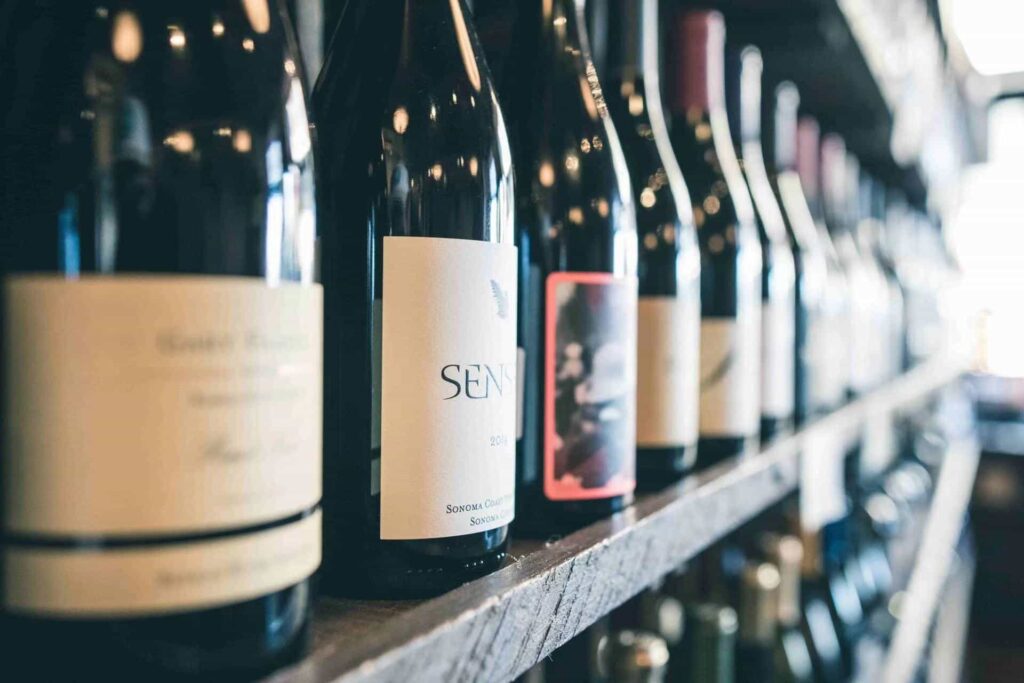
▶ Light Green:
Light green wine bottles for wine packaging offer moderate protection and are often used for wines that are not intended for long-term storage, such as many white wines. They provide a balance between showcasing the wine’s color and offering some degree of light protection.
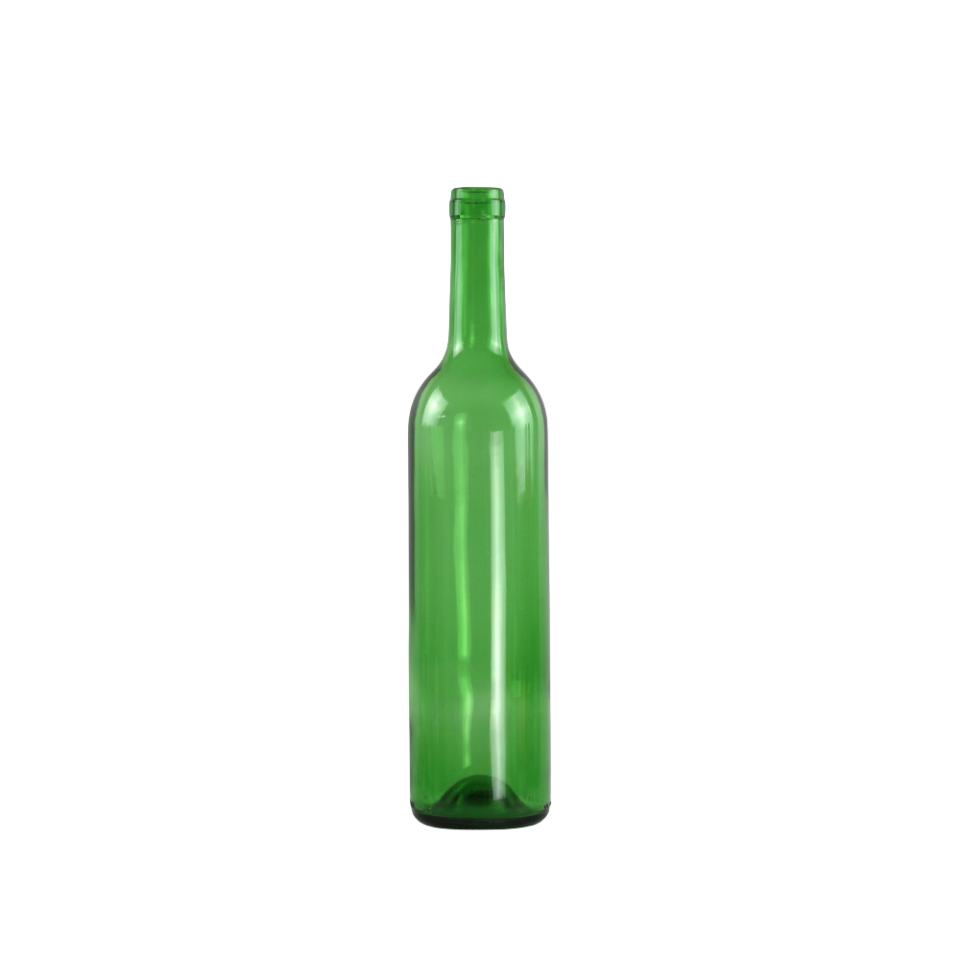
▶ Clear or Flint:
While clear wine bottles provide minimal protection against UV rays, they are popular for wines that are consumed relatively quickly after bottling, such as some rosés and light white wines. The clear glass showcases the wine’s color, which can be a significant aesthetic and marketing consideration.
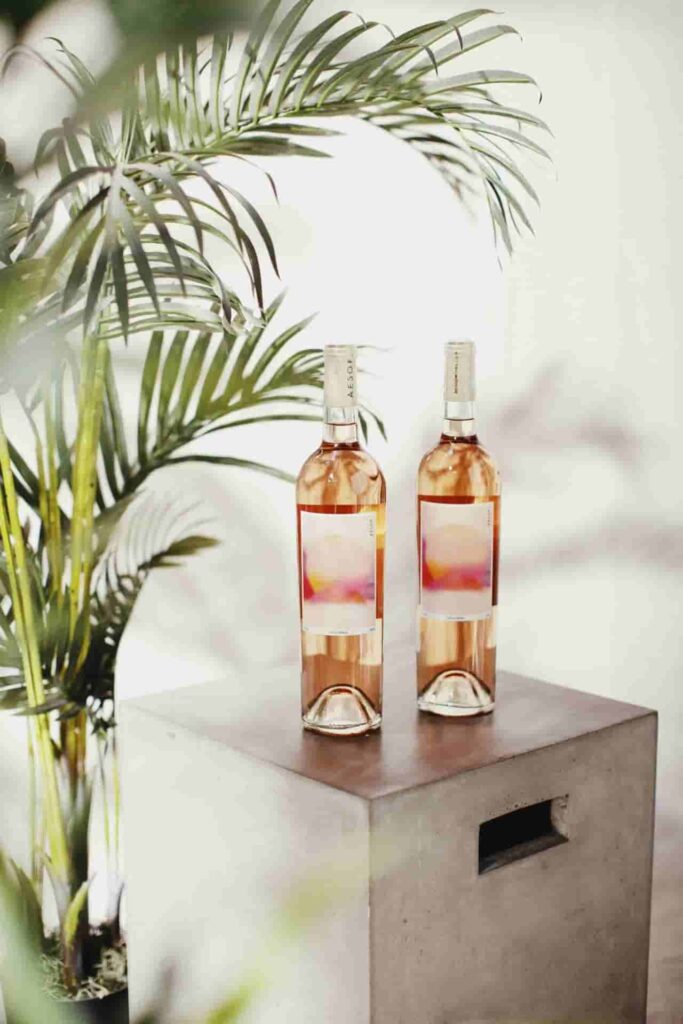
▶ Considerations Beyond Color:
○ Apart from color, the storage conditions of the wine also play a crucial role. Even wines in dark bottles should be stored away from direct light to preserve their quality.
○ Environmental and recycling concerns might also influence the choice of bottle color, as darker colors might use more coloring agents and can be less recyclable than clear glass.
Ultimately, while the best bottle color to store wine depends largely on its type and purpose of storage, darker tones such as dark green or amber bottles tend to provide greater long-term protection against light exposure.
Q4: Can the glass quality of a wine bottle affect the taste of the wine?
The quality of glass used in wine bottles can indeed have an impact on the taste and overall quality of the wine. Here’s how:
▶ Chemical Stability:
High-quality glass is chemically inert, meaning it doesn’t react with the wine inside. Lower-quality glass may have impurities that could potentially leach into the wine, altering its flavor and aroma.
▶ Oxygen Permeability:
The quality of the glass can influence the bottle’s ability to protect the wine from oxygen exposure. Poorly made bottles might have tiny imperfections that allow more oxygen to permeate over time, leading to premature aging or oxidation of the wine.
▶ Consistency in Bottle Manufacturing:
Uniformity in glass quality ensures consistent bottle thickness and shape, which is important for maintaining consistent aging conditions. Inconsistencies in the glass can lead to variations in how the wine ages, even among bottles of the same vintage.
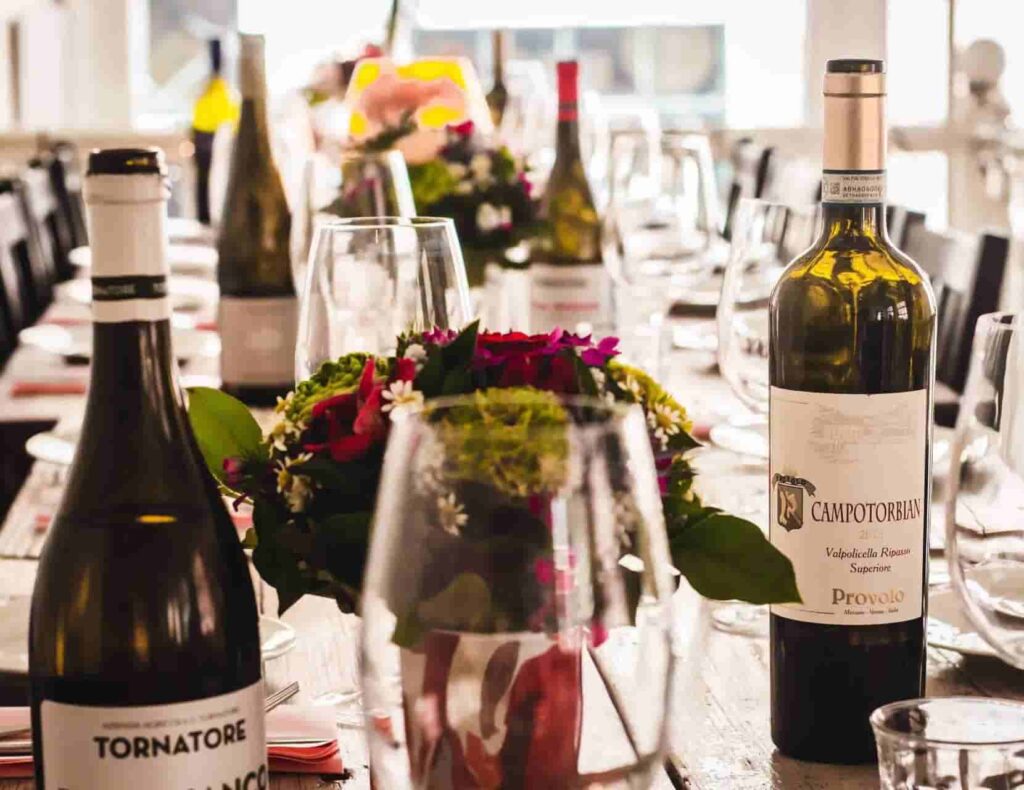
▶ Protection from External Factors:
High-quality glass provides better protection against external influences like light and temperature fluctuations. As discussed earlier, exposure to light, especially UV rays, can detrimentally affect the wine’s flavor.
▶ Nonporous Surface:
Quality glass has a nonporous surface that doesn’t hold onto flavors or odors from previous contents, ensuring that the wine retains its intended flavor profile.
▶ Environmental Impact:
While not directly affecting taste, the environmental aspect of glass production and recycling can be a consideration for consumers who prefer wines packaged in eco-friendly materials.
So, while the glass itself doesn’t impart flavor to wine, its quality is crucial in protecting its intended taste against external factors and maintaining bottle integrity. A well-made bottle acts as a faithful guardian of its contents from cellar to glass.
Q5: What are the environmental impacts of different glass bottle colors?
The environmental impact of glass bottle colors for wine is an important consideration in sustainable packaging. The production and recycling processes for different colored glass can have varying ecological footprints:
▶ Energy Usage in Production:
Darker colored glass, like amber or dark green, often requires more energy to produce. The pigments and oxides used to color the glass need higher temperatures, increasing energy consumption.
▶ Recycling Efficiency:
○ Clear glass (flint) is generally easier to recycle than colored glass. It can be recycled into new clear bottles without any color sorting, making the process more efficient.
○ Colored glass needs to be sorted by color for recycling, which can be more resource-intensive. Mixed colors can contaminate the recycling stream, leading to limitations in reuse.
▶ Pigments and Additives:
The environmental impact also depends on the types of pigments and additives used to create different colors. Some coloring agents may be more environmentally harmful than others, both in terms of their production and their disposal.
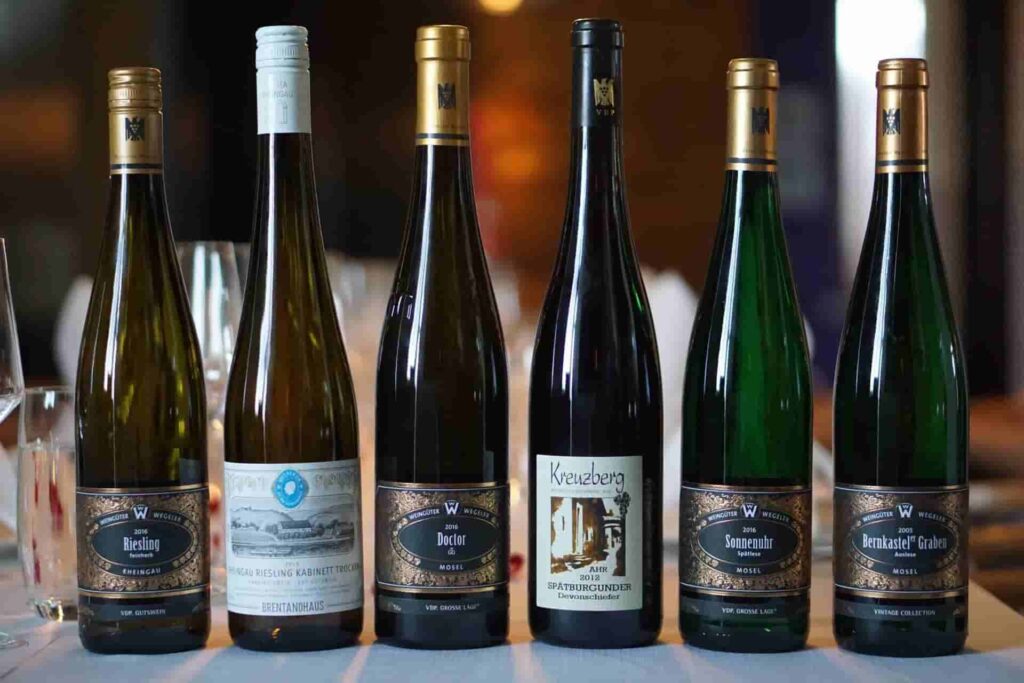
▶ Effect on Carbon Footprint:
The overall carbon footprint of colored glass bottles might be higher due to the added energy in production and complexities in recycling. However, this needs to be balanced with the functional requirements of the bottle, such as protection from light for certain types of wine.
▶ Local Recycling Infrastructure:
The environmental impact is also influenced by the availability and efficiency of local recycling facilities. In regions where glass recycling is less developed, even clear glass can have a significant environmental impact due to inefficient processing.
▶ Market Demand and Production Volume:
The production volume, driven by market demand for certain colors, also plays a role. Higher demand for a particular color can lead to economies of scale, potentially reducing the environmental impact per bottle.
While clear glass bottles tend to be more environmentally friendly due to easier recycling, when selecting wine bottle colors it must also consider the functional requirements of the product and environmental impacts. Finding a balance between functional needs and ecological considerations is key to making sustainable packaging choices.
Q6: How do I choose the right closure for my wine bottle?
Selecting the right closure for a wine bottle is crucial as it affects the wine’s aging process, ease of use, and overall consumer experience. Here’s a guide to help you make the best choice:
▶ Cork
○ Traditional Natural Cork: Ideal for aging wines, as it allows for a small, controlled amount of oxygen to interact with the wine over time, aiding in its maturation.
○ Synthetic Cork: A good alternative for wines consumed within a shorter timeframe. Offers consistent quality without the risk of cork taint.
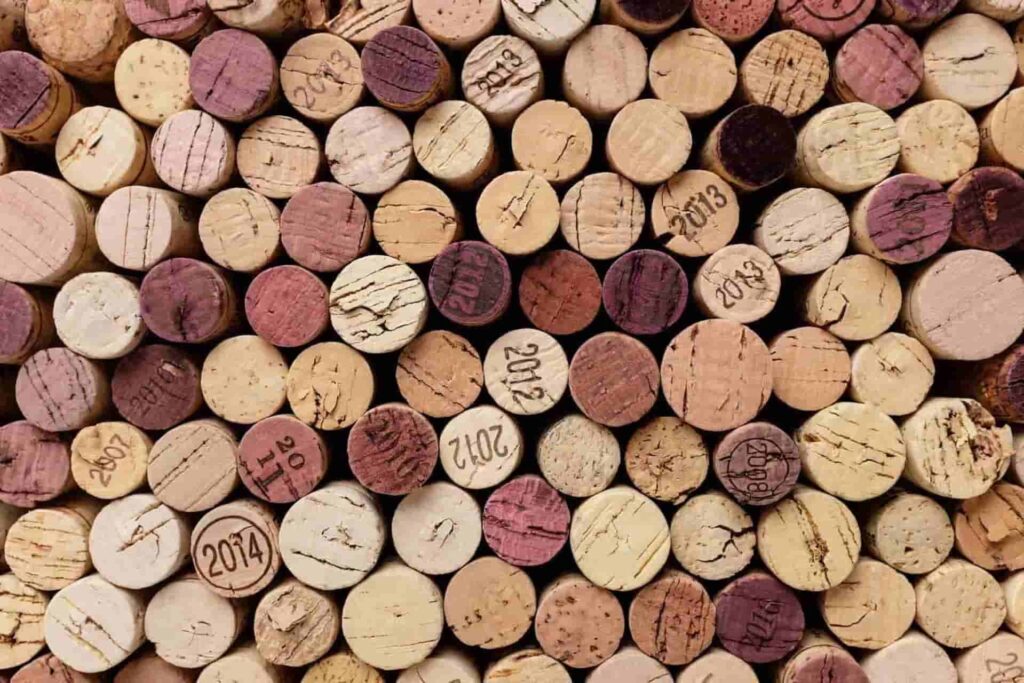
▶ Screw Caps
○ Advantages: Provide a tight seal and are easy to open and reseal. Great for wines meant to be consumed young, as they prevent oxygen ingress and preserve the wine’s freshness.
○ Considerations: Some consumers associate screw caps with lower-quality wines, though this perception is changing.

▶ Glass Stoppers
○ Aesthetic Appeal: Glass stoppers offer an elegant and modern look, often used for premium wines.
○ Functionality: They provide a good seal and are reusable, making them a sustainable option.
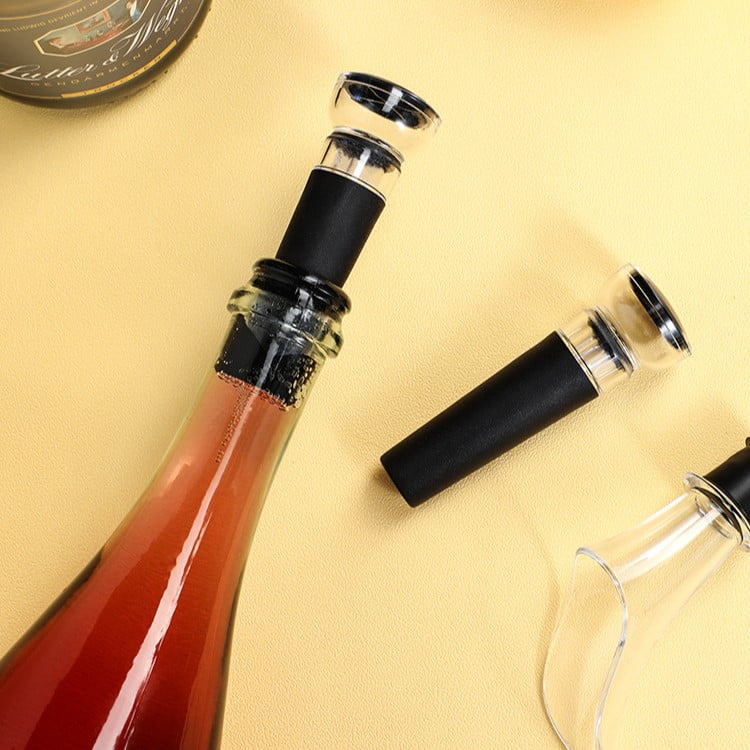
▶ Crown Caps
Used mainly for sparkling wines during secondary fermentation. Some winemakers also use them for still wines, especially for wines in the experimental stages.
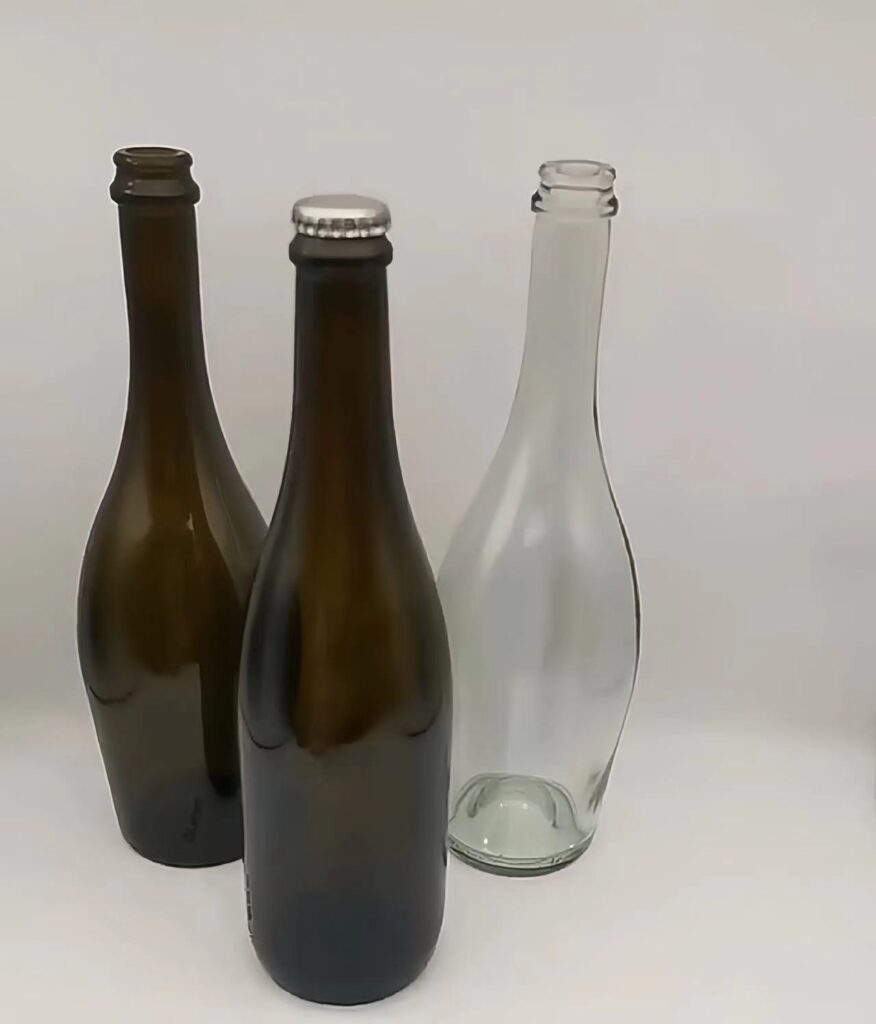
▶ Considerations for Wine Type and Audience
The choice of closure can depend on the type of wine (e.g., age-worthy reds vs. young whites) and the target market’s preferences and perceptions.
▶ Environmental Impact
Consider the environmental implications of the closure type. For instance, natural cork is biodegradable and renewable, while screw caps and synthetic corks may have different environmental footprints.
▶ Branding and Aesthetics
The closure is also part of your branding. It should align with the bottle design and brand image.
▶ Cost Factors
Budget considerations may also influence your choice, as the cost of closures can vary significantly.
When choosing the appropriate closure for your wine bottle, numerous considerations need to be considered, including its style and intended aging process, consumer perceptions, environmental impact, branding considerations, and cost. Recognizing these aspects will assist in selecting an attractive closure that complements and enhances its packaging and appeal.
Q7: What are the benefits of custom-designed wine bottles?
Wine bottles that are custom-made offer benefits beyond their functionality. They elevate both the brand experience and the consumer’s experience. They provide a platform for differentiation and brand identity. A custom wine bottle will stand out in a market that is crowded with standard designs. It makes a strong statement and captures the attention of consumers. It’s not only about being unique but also about creating an engaging and memorable experience for consumers.
Custom bottles for red wine also allow you to tell a story and communicate a brand’s narrative. This is important for building emotional connections with your consumers. Custom bottles can be used to reflect a brand’s heritage, its craftsmanship, or even its commitment to sustainability – all aspects that modern consumers are increasingly interested in. Custom-designed bottles can also increase the perceived value of a product. This is often used to justify a higher price and cater to a more premium market segment. It is especially beneficial for special editions and limited releases where the uniqueness can increase exclusivity. Custom wine bottles offer a competitive edge to wine producers by enhancing brand recognition, engaging consumers, and promoting differentiation.
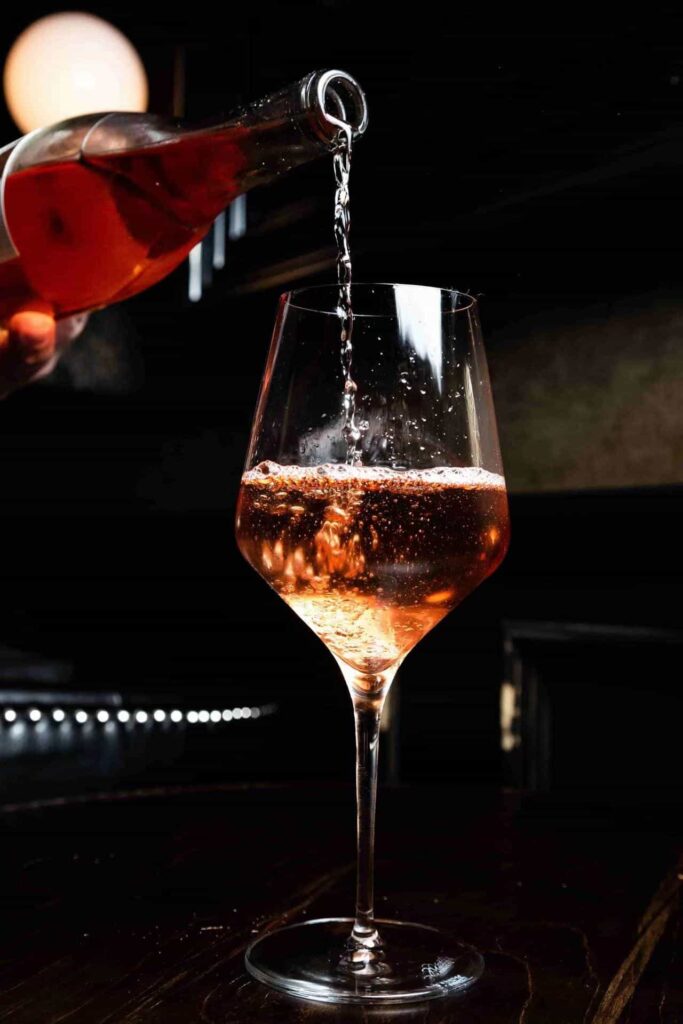
Q8: Are there specific glass bottle designs for different types of wine?
Yes, specific glass bottle designs are often associated with different types of wine, reflecting traditions and practical considerations. These design choices can hint at the wine’s origin, style, and best use:
Bordeaux Bottles with straight sides and high shoulders. Traditionally used for Bordeaux varietals like Cabernet Sauvignon and Merlot. The high shoulders help in trapping sediment, beneficial for wines that are aged.

Burgundy Bottles with a wider base and gently sloping shoulders. Typically used for Burgundy wines like Pinot Noir and Chardonnay. The shape is thought to be more conducive to the delicate nature of these wines.

Alsace or Rhine Bottles, which are tall, and slender with a gentle slope at the shoulders. Commonly used for aromatic white wines like Riesling. The design is functional for storing in tight spaces and often indicates a sweeter or more aromatic wine.

Port and Sherry Bottles often come with a bulb in the neck. The bulb helps in catching sediment when pouring these aged wines.
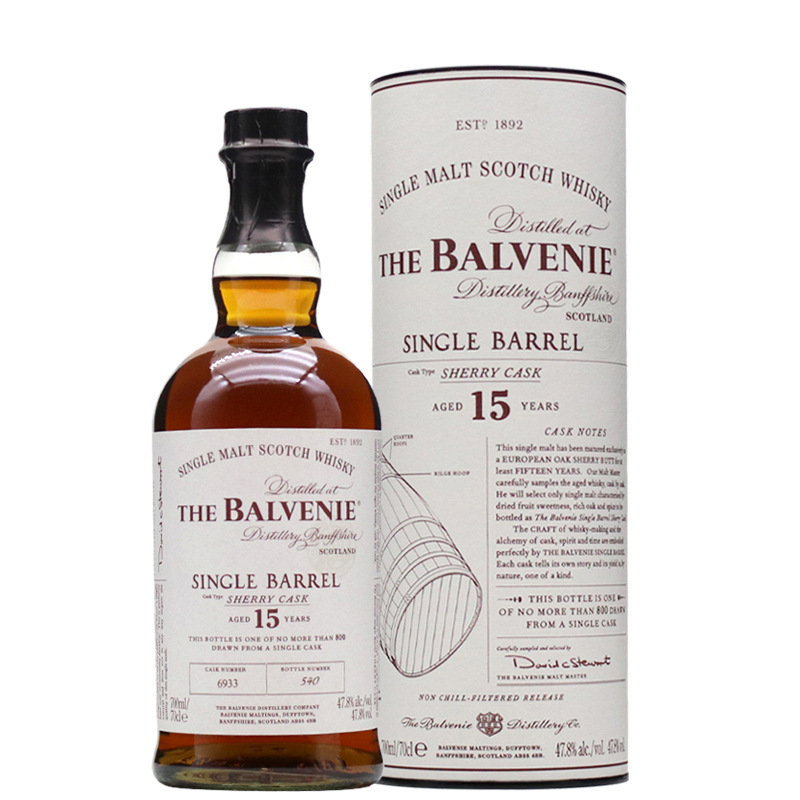
These traditional shapes have evolved over centuries, reflecting both the practical needs of wine storage and the cultural heritage of winemaking regions. While winemakers today may choose to deviate from these traditions for branding or stylistic reasons, these classic designs remain a reference point in the wine industry.
Q9: How does bottle weight impact wine quality and shipping costs?
The weight of a wine bottle can have a significant impact on both the perceived quality of the wine and the logistics of shipping. Here’s an overview:
▶ Impact on Perceived Quality
○ Heavier Bottles: Often associated with premium or high-quality wines. The weight can convey a sense of luxury and craftsmanship, influencing consumer perception even before the wine is tasted.
○ Lighter Bottles: Increasingly popular for everyday or value wines. Advances in glass technology mean that lighter bottles can still provide adequate protection for the wine, without the added cost or environmental impact of heavier glass.
▶ Shipping and Transportation Costs
○ Weight Factors: Heavier bottles cost more to transport due to their increased weight. This affects not only the cost but also the carbon footprint of shipping.
○ Volume and Efficiency: Lighter bottles can allow for more efficient use of space in transport, potentially reducing shipping costs and environmental impact.
○ Breakage Risk: Heavier bottles might be more durable and less prone to breakage during transport, although advances in packaging are mitigating this concern for lighter bottles as well.
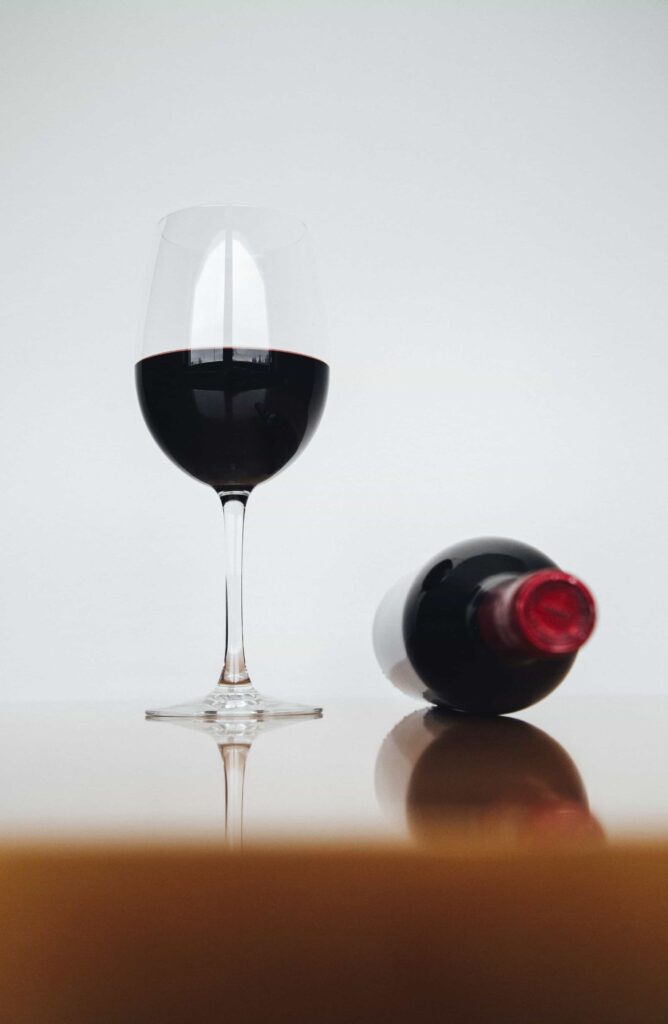
▶ Environmental Considerations
○ Sustainability: Lighter bottles have a lower environmental impact, both in terms of the resources used to produce them and the energy required for transportation.
○ Consumer and Industry Trends: There is a growing trend towards sustainability in the wine industry, with both producers and consumers showing increased interest in environmentally friendly packaging options.
Overall, heavier bottles may improve perceived value and quality but incur higher shipping costs and environmental impacts. Lighter bottles may offer more sustainable and cost-effective solutions; advances in glass manufacturing technology are closing this protection and durability gap as well. In terms of choosing an optimal bottle weight for a brand’s target market preferences.
Q10: What are the trends in sustainable wine packaging?
Sustainability in wine packaging is gaining momentum as the industry becomes increasingly aware of environmental impacts. Here are some key trends:
▶ Lightweight Bottles: Reducing the weight of glass bottles is a major trend. Lighter bottles use less raw material and energy to produce and reduce transportation emissions.
▶ Recycled Glass: Using recycled glass for new bottles lowers the carbon footprint. It reduces the need for raw materials and the energy required in production.
▶ Alternative Materials: The use of alternative, eco-friendly materials like plant-based plastics or biodegradable materials for wine packaging is on the rise.
▶ Refillable and Reusable Bottles: Encouraging consumers to reuse wine bottles, or offering refillable options at local stores, is gaining popularity as a way to reduce waste.
▶ Sustainable Labeling: The use of recycled paper, soy or vegetable-based inks, and minimalistic label designs are being adopted to enhance sustainability in packaging.
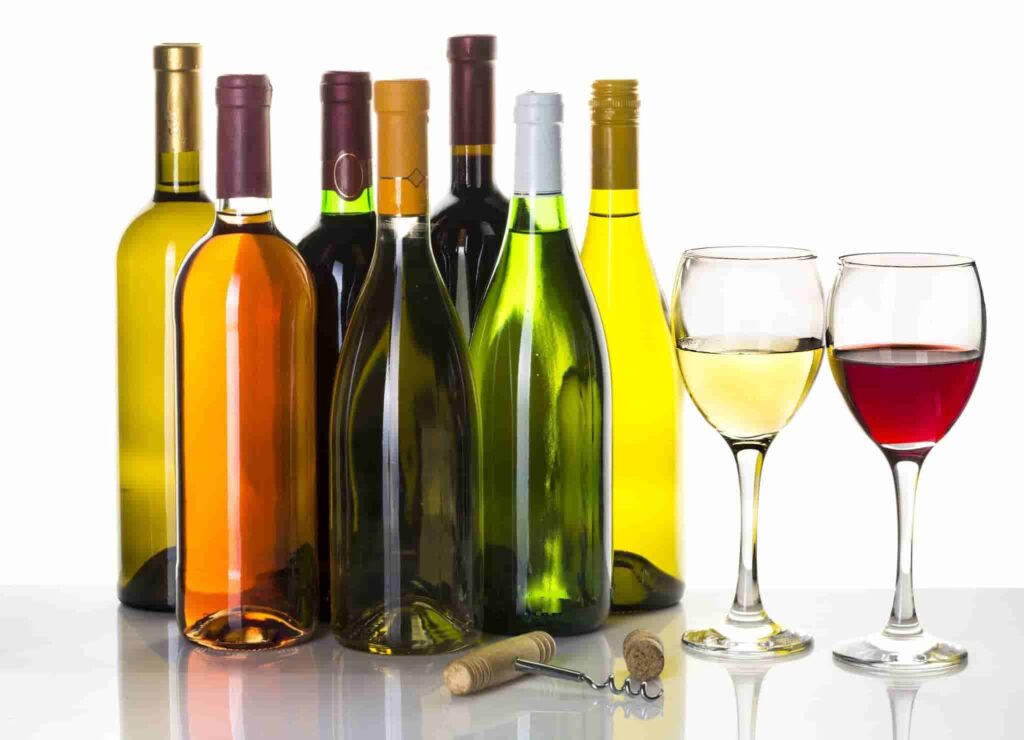
▶ Carbon-Neutral Shipping and Production: Wineries are increasingly focusing on reducing their carbon footprint by optimizing shipping and production processes.
▶ Cork Recycling Programs: Cork is a sustainable material, and recycling programs are becoming more widespread, allowing corks to be reused in various products.
▶ Bulk Shipping: Shipping wine in large containers and bottling closer to the market reduces shipping weight and packaging waste.
▶ Sustainability Certification and Labeling: Certifications and labels indicating sustainable practices are becoming more common, offering consumers transparency and choice.
These trends indicate a growing commitment by the wine industry to environmental stewardship, in line with consumer demand for more eco-friendly products. Not only is attention being drawn to the packaging itself but also to how products move through production to disposal or reuse.
Smilebottles provides comprehensive information about wholesale glass wine bottles in bulk and related services, from our products and services to industry developments. If you require direct assistance or have specific inquiries, don’t hesitate to get in touch directly – our friendly team is always on hand with tailored support and solutions tailored specifically to meet your needs! Discover how quality glass bottles from Smilebottles can enhance the product packaging process.










